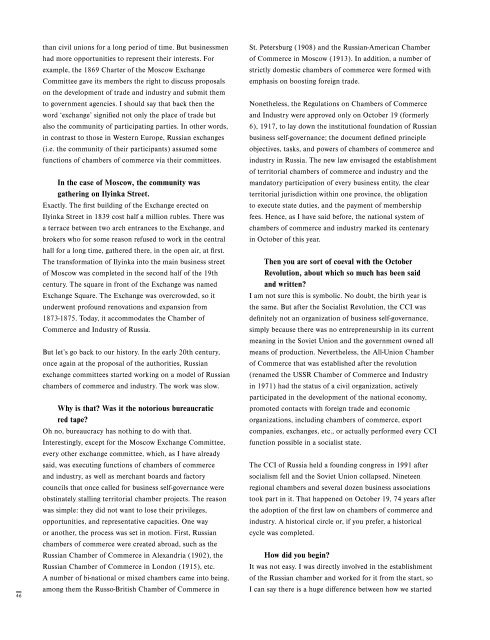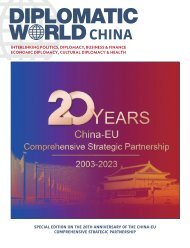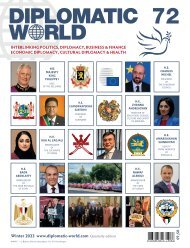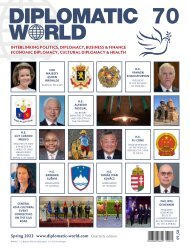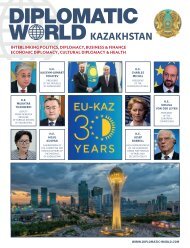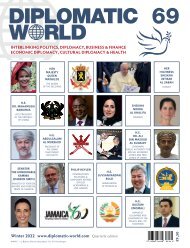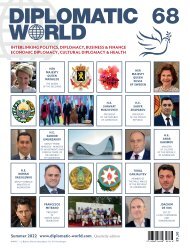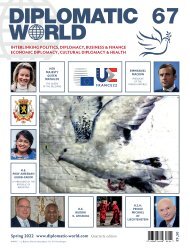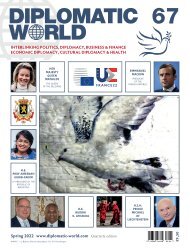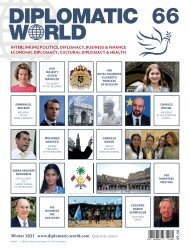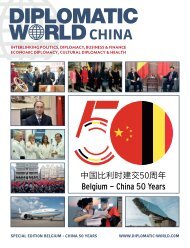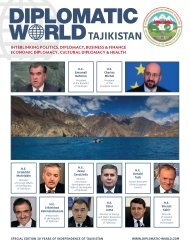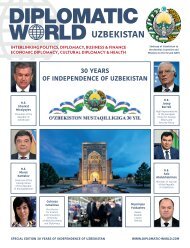You also want an ePaper? Increase the reach of your titles
YUMPU automatically turns print PDFs into web optimized ePapers that Google loves.
46<br />
than civil unions for a long period of time. But businessmen<br />
had more opportunities to represent their interests. For<br />
example, the 1869 Charter of the Moscow Exchange<br />
Committee gave its members the right to discuss proposals<br />
on the development of trade and industry and submit them<br />
to government agencies. I should say that back then the<br />
word ‘exchange’ signified not only the place of trade but<br />
also the community of participating parties. In other words,<br />
in contrast to those in Western Europe, Russian exchanges<br />
(i.e. the community of their participants) assumed some<br />
functions of chambers of commerce via their committees.<br />
In the case of Moscow, the community was<br />
gathering on Ilyinka Street.<br />
Exactly. The first building of the Exchange erected on<br />
Ilyinka Street in 1839 cost half a million rubles. There was<br />
a terrace between two arch entrances to the Exchange, and<br />
brokers who for some reason refused to work in the central<br />
hall for a long time, gathered there, in the open air, at first.<br />
The transformation of Ilyinka into the main business street<br />
of Moscow was completed in the second half of the 19th<br />
century. The square in front of the Exchange was named<br />
Exchange Square. The Exchange was overcrowded, so it<br />
underwent profound renovations and expansion from<br />
1873-1875. Today, it accommodates the Chamber of<br />
Commerce and Industry of Russia.<br />
But let’s go back to our history. In the early 20th century,<br />
once again at the proposal of the authorities, Russian<br />
exchange committees started working on a model of Russian<br />
chambers of commerce and industry. The work was slow.<br />
Why is that? Was it the notorious bureaucratic<br />
red tape?<br />
Oh no, bureaucracy has nothing to do with that.<br />
Interestingly, except for the Moscow Exchange Committee,<br />
every other exchange committee, which, as I have already<br />
said, was executing functions of chambers of commerce<br />
and industry, as well as merchant boards and factory<br />
councils that once called for business self-governance were<br />
obstinately stalling territorial chamber projects. The reason<br />
was simple: they did not want to lose their privileges,<br />
opportunities, and representative capacities. One way<br />
or another, the process was set in motion. First, Russian<br />
chambers of commerce were created abroad, such as the<br />
Russian Chamber of Commerce in Alexandria (1902), the<br />
Russian Chamber of Commerce in London (1915), etc.<br />
A number of bi-national or mixed chambers came into being,<br />
among them the Russo-British Chamber of Commerce in<br />
St. Petersburg (1908) and the Russian-American Chamber<br />
of Commerce in Moscow (1913). In addition, a number of<br />
strictly domestic chambers of commerce were formed with<br />
emphasis on boosting foreign trade.<br />
Nonetheless, the Regulations on Chambers of Commerce<br />
and Industry were approved only on October 19 (formerly<br />
6), 1917, to lay down the institutional foundation of Russian<br />
business self-governance; the document defined principle<br />
objectives, tasks, and powers of chambers of commerce and<br />
industry in Russia. The new law envisaged the establishment<br />
of territorial chambers of commerce and industry and the<br />
mandatory participation of every business entity, the clear<br />
territorial jurisdiction within one province, the obligation<br />
to execute state duties, and the payment of membership<br />
fees. Hence, as I have said before, the national system of<br />
chambers of commerce and industry marked its centenary<br />
in October of this year.<br />
Then you are sort of coeval with the October<br />
Revolution, about which so much has been said<br />
and written?<br />
I am not sure this is symbolic. No doubt, the birth year is<br />
the same. But after the Socialist Revolution, the CCI was<br />
definitely not an organization of business self-governance,<br />
simply because there was no entrepreneurship in its current<br />
meaning in the Soviet Union and the government owned all<br />
means of production. Nevertheless, the All-Union Chamber<br />
of Commerce that was established after the revolution<br />
(renamed the USSR Chamber of Commerce and Industry<br />
in 1971) had the status of a civil organization, actively<br />
participated in the development of the national economy,<br />
promoted contacts with foreign trade and economic<br />
organizations, including chambers of commerce, export<br />
companies, exchanges, etc., or actually performed every CCI<br />
function possible in a socialist state.<br />
The CCI of Russia held a founding congress in 1991 after<br />
socialism fell and the Soviet Union collapsed. Nineteen<br />
regional chambers and several dozen business associations<br />
took part in it. That happened on October 19, 74 years after<br />
the adoption of the first law on chambers of commerce and<br />
industry. A historical circle or, if you prefer, a historical<br />
cycle was completed.<br />
How did you begin?<br />
It was not easy. I was directly involved in the establishment<br />
of the Russian chamber and worked for it from the start, so<br />
I can say there is a huge difference between how we started


